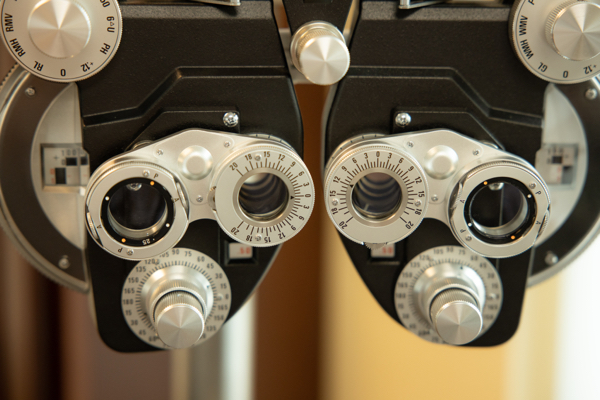Lens prescribing philosophy according to what I’ve learned as a Behavioral Optometrist:
Which is better, 1 or 2? 1 or 2? This is not a test, there are no right answers and you cannot fail your eye exam! So many patients worry about “failing” the test that it literally changes their prescription because they are over-thinking. So relax and breathe and let the lenses do the job. If you cannot decide which lens LOOKS BETTER, then try to choose which lens FEELS BETTER. And “they look the same” is also a correct answer! The numbers we measure during an eye exam on any given day are not set in stone. They can change from hour to hour or day to day based on: how you are feeling, being very tired or well – rested, in a bad/good mood, well – or malnourished, certain medications, if you’ve just received bad news, etc. Many things affect how the brain uses the visual system to gather information. Therefore, we do not let one measurement dictate how we prescribe.
Near-sighted/Myopia: The brain wants to be as lazy as possible! If you’re locked in to focusing up close for hours on end (which everyone is nowadays, as I type this on my phone in a completely dark room), your brain says, OK, if you want to focus up close this much I’ve got to compromise somewhere. And it gives up clarity at distance in order to focus up close without doing actual work. We usually do not prescribe distance glasses in an “emerging myope” because their problem is not distance, it’s near stress. Reading glasses to be worn whenever doing 5 minutes or more of near work helps decrease near – sightedness (to a certain extent).
The exam room matters By virtue of how we were originally taught to do exams: in a dark room simulating a cave with no windows, our visual systems collapse inward and we experience a myopic shift just by being in the small room! Our exam room is 2 walls of windows. We encourage patients to relax while being refracted “let the lens do the job,” ie stop over focusing and trying so hard. After the exam we “trial frame” the new prescription (build their glasses in a trial frame) so they can look out the window and actually feel what it feels like to have the different prescription while looking at the real world.
Personality We can usually tell a lot about people and their personality just based on their glasses prescription. Most myopes (our near-sighted friends) like the feeling of being “dialed in.” They are typically described as “Type-A”, very rigid and concrete in their thinking, maybe even a little OCD or impulsive. Hyperopes (our far-sighted friends) are usually the opposite: laid back personality, difficulty making decisions, and they don’t seem to be bothered by much.
Far-sighted/ Hyperopia Writing prescriptions based on using eye drops to stop the focus system is an archaic and out-dated practice. Because when in our lives are we ever without our focus system, other than eye drops or death? All this does is relax the focus system so much the prescription is notoriously too high. Once a patient wears that high prescription for a while, they begin to struggle turning on their focus system which makes eye alignment more and more difficult.
The End Goal To get the absolute best prescription, observing and testing functional vision is the key! Watching HOW a patient performs a visual task while moving, sitting, or standing gives the best information about whether or not the prescription is right for them. We can make patients worse and worse by adding so much lens that their focus system gives up, requiring more lens for clarity, but function suffers! We allow them to turn on and work their focus system by giving them the least amount of plus that still gives good function. Spoiler alert: Good visual function is not just 20/20. It includes eye movements, teaming, tracking, focusing, scanning, visual memory and visual integration. Our goals as prescribers of lenses should be to give the LEAST AMOUNT of plus or minus that still gives functional vision. And that requires changing the way we refract and prescribe and counseling patients on what they are seeing and how they should use their visual systems.
Schedule your initial evaluation with Dr. Sanders and learn how we can help your child excel!

